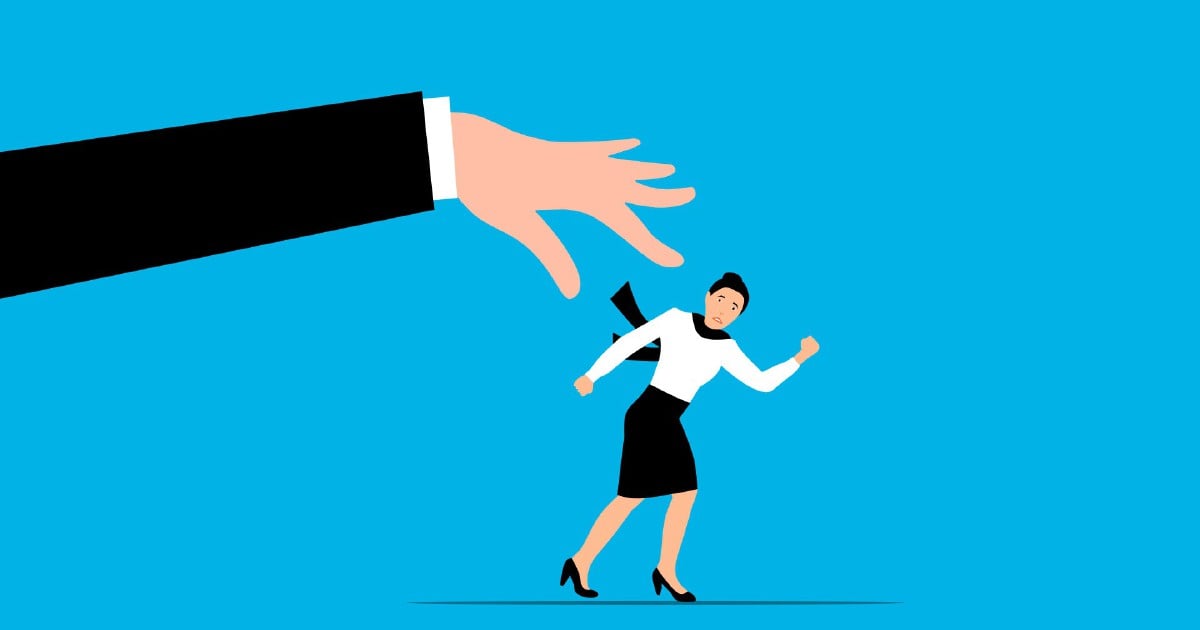In The First Global Survey, Psychological Harassments Found As Most Common Workplace Harrassment
The results show that one-third of those who have experienced violence or harassment at work reported having experienced multiple forms, and 6.3% of those who experienced physical, psychological, and sexual violence and harassment in three reported exposure to all three forms.

75,000 workers which are more than 22%, surveyed in 121 countries said they had experienced one or more forms of viciousness or harassment in the past year, according to the report. The first attempt to examine the extent of workplace violence and harassment around the world found that workplace abuse is widespread among young people, immigrants, wage earners, and especially women. The results show that one-third of those who have experienced violence or harassment at work reported having experienced multiple forms, and 6.3% of those who experienced physical, psychological, and sexual violence and harassment in three reported exposure to all three forms.
Most people agree that work-related stress is the result of interactions between workers and working conditions. Opinions are divided according to gender. These different views are important because they suggest different ways to avoid stress. Variances in individual traits, such as personality and coping styles, are most important in predicting whether particular working conditions will lead to stress. This perspective focuses on workers and leads to preventative strategies that help them cope with difficult working conditions.

A good example is the excessive work demands and conflicting expectations depicted in the story of David and Teresa. This evidence emphasizes working conditions as a major cause of workplace stress and supports workplace redesign as a primary prevention strategy. Bullying is a form of harassment that involves repeated hostile, unwelcome words, actions, or behavior that hurts, hurts, annoys, insults, or is offensive.
In such situations, the victim’s dignity and mental or physical health are threatened, and the work and study environment becomes toxic.
How do you know it’s harassment?
1. Repetition and Severity Actions must be repeated. The number of repetitions required to portray harassment depends on the actions, words, severity of the behavior, and impact on the victim. However, a single serious incident with similar consequences and lasting harm to the victim may constitute harassment. It’s best to act quickly to prevent the situation from getting worse. If you don’t stop, the harassment will continue and may get worse.
2. Hostile or Undesirable Behavior Hostile behavior is designed to harm. In such cases, the victim does not have to expressly disapprove of any action, comment, or behavior that is considered offensive. Unintended actions don’t require malice. Victims of such conduct have a responsibility to express their dissatisfaction and demand that offenders cease.
3. Attacks on dignity and well-being Anger behaviors are usually aimed at the dignity and psychological or physical well-being of the victim. Such situations can result in a loss of self-confidence, a decline in the normal functioning of the human body, or psychological or emotional imbalances.

Victims of bullying may experience crying, depression, memory problems, depression, irritability, restlessness, apathy, isolation, lack of self-confidence and self-esteem, fatigue, sleep disturbances, gastrointestinal problems, anorexia, back pain, and sweating. You may experience symptoms of, dizziness, tremors, and nausea. Many employees report that work-related stress in the workplace affects their performance and health. According to a recent survey conducted by North-western National Life, nearly 40% of workers say their job is very stressful. Another Yale University survey found that 29% of workers said they were extremely stressed about their jobs.
People also define stress as “people’s unwanted response to excessive pressures.” Workers experience stress when they cannot cope with pressures and other problems. Employers should tailor requirements to workers’ skills and knowledge. For example, employees may become stressed if they feel they do not have enough skills. Providing training, planning, and backing can decrease pressure and reduce stress levels. Factors such as skills and experience, age, or disability can all affect whether a worker can cope.
Exposure levels vary by occupation and population group. Some workers are at higher risk of stress than others. Research shows that young workers, women, and less qualified workers are at the highest risk of job stress and the complications it brings. Full-time non-regular workers may have the highest workload risk, lowest job control, and highest job demand.
Effects Of Harassments At Work
Factors of stress at work can be divided into physical stress and psychosocial stress. Physical stressors include ergonomic factors such as noise, inadequate lighting, inappropriate office or work design, and inappropriate work postures. Psychosocial stressors are probably the most common stressors. These include high labor demand, inflexible working hours, poor work management, poor work design and structure, bullying, harassment, and job insecurity. Work stress not only affects employees but also negatively impacts company performance. The effects of workload are reflected in the physical health, mental health, and behavior of workers. These effects begin as anxiety about the stressor and occur sequentially.

Anxiety, in turn, causes elevated blood pressure and anxiety, increasing the risk of coronary artery disease, substance abuse, and anxiety disorders. Studies have shown that stress at work is a major risk factor for cardiovascular disease (obesity, high cholesterol, and high blood pressure) and that cardiovascular events such as stroke and heart attack are linked. There is also increasing evidence that it increases the risk of diabetes. Other physical health problems associated with workplace stress include immune deficiency disorders, musculoskeletal disorders such as gastrointestinal disorders, and chronic back pain.
Workplace stress also negatively impacts the mental health of workers, increasing their risk of anxiety, burnout, depression, and addiction. Stressed workers get themselves into unhealthy behaviors such as smoking, alcohol and drug abuse, and poor eating habits. It reduces employee productivity, increases absenteeism and absenteeism, increases days off for doctor visits, and increases medical costs borne by employers. Workplace stress is also associated with higher accident and injury rates and higher turnover, both of which increase administrative costs.
Psychological violence and harassment were the most commonly reported forms for both genders during their employment. About 8.5% of respondents said they had experienced physical violence or harassment in the workplace, with men more common than women, and about 6.3% said they had faced sexual harassment or violence, according to the report, of which 8.2% were female and 5% were male. More than 60% of his victims of workplace violence and harassment “reported that most recent incidents occurred more than once in the previous five years”.

The study found that people who have faced discrimination at some point in their lives because of their gender, disability, national origin, ethnicity, color, or religion are more likely to be employed in the workplace than those who have not faced such discrimination. We also found that people were more likely to experience violence and harassment at home.
The three organizations commented, “figures on harassment and violence in the workplace are irregular and limited”, so the ILO joined forces with Lloyd’s and Gallup. The study used data from the Lloyds Register Foundation Global Risk Survey 2021, part of the Gallup Global Poll. The findings pave the way for further research, the organization said.
edited and proofread by nikita sharma




